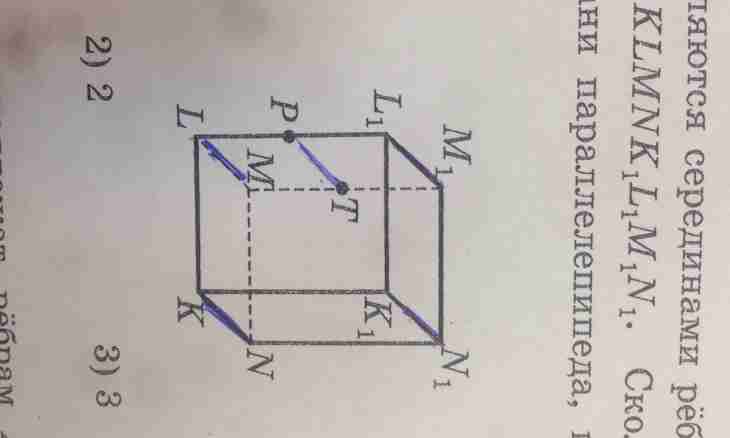To find a full surface of a parallelepiped, it is necessary to summarize the areas of its side surface and two bases. Depending on a type of a figure, sides can be parallelograms, rectangles or squares.
Instruction
1. A parallelepiped - the many-sided spatial figure consisting of six quadrangles having the parallelogram form. Distinguish a direct and inclined parallelepiped. In the first side sides represent vertical rectangles, in the second they make corners with the bases, other than 90 °.
2. This figure has two widespread special cases – rectangular and cubic. In a rectangular parallelepiped all sides are rectangles, cubed – squares. These forms often meet at the solution of tasks on creation of three-dimensional projections, determination of length of a vector, drawing up graphic chemical formulas of structure of a molecule, etc.
3. Proceeding from the aforesaid, it is possible to find a full surface of a parallelepiped for any its version. For this purpose it is enough to summarize the areas of all sides of a figure: S = 4 · Sbg + 2·So.
4. First composed is called a side surface. Consider side sides which, on property of a parallelepiped, are in pairs parallel and equal. These are parallelograms with the parties with, b or and, b. It is known that the area of this two-dimensional figure is equal to the work of the basis on height: 4 · Sbg = (2 • and + 2·c) • h.
5. It is easy to notice that expression 2 • and + 2 • with is a perimeter of the basis of a parallelepiped, therefore: 4 · Sbg = Po•h.
6. The area of the basis of So represents the work of the party of a horizontal parallelogram on ho height which is carried out to it: So = 2 • with • ho.
7. Substitute both sizes in the general formula: S = P • h + 2 • with • ho.
8. At a direct parallelepiped height is equal to length of a side edge: S = P • b + 2 • with • ho.
9. The same statement is fair for a rectangular parallelepiped, and the area of the basis represents the doubled work of lengths of the parties: S = 2 · (and + c) • b + 2 • and • with = 2 • (and • b + b • with + and • с).
10. At a cube all measurements are equal: S = 6 · and².

